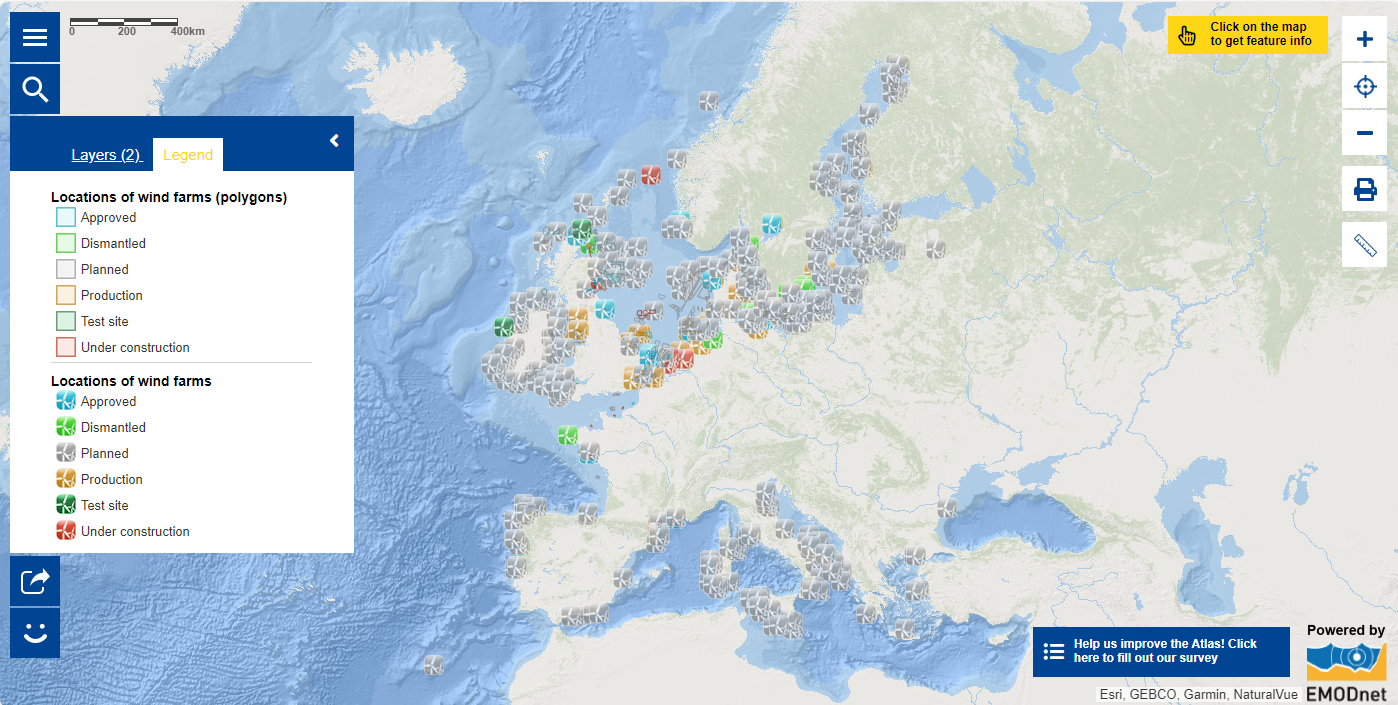Map of the Week – Offshore Wind Energy

The 10th edition of the Ocean Energy Europe Conference & Exhibition (OEE2023 ) was held in The Hague, the Netherlands on 25-26 October 2023. OEE is a meeting platform for the ocean energy community where high-level decision makers, businesses and innovators can connect, to foster innovations and exchange ideas. With global temperatures rising, natural disasters becoming more frequent and severe, and ecosystems under threat, it has become imperative to take bold and swift action to mitigate the effects of climate change. Under the European Green Deal and the REPowerEU Plan, in the endeavor to reach climate neutrality by 2050 and to regain energy independence, one key aspect is the expansion of renewable energy sources. Besides wave and tide energies, offshore wind energy, which is included as marine renewable energy [1], has gained attention and momentum as a vital component of the blue energy landscape.
On 24 October 2023, the European Commission published the European Wind Power Action Plan to support a healthy and competitive wind energy supply chain, as well as to help the wind industry to tackle challenges in the future path of expansion of wind power and the wind sector throughout the European Union (EU) [2]. In the EU, where industrial competitiveness in the wind power sector has been built [2], onshore and offshore wind energy will continuously be a critical player in the transition to a sustainable future. Wind power, in which a wind turbine converts wind into electricity, is one of the leading sustainable energy sources. As the winds at sea are more consistent and tend to blow harder, large collections of offshore windmills, known as wind farms, have the potential to generate a steady supply of clean wind energy. Wind energy is crucial for fulfilling the EU's decarbonisation goals and providing clean, cost-effective, and secure electricity to households, businesses, and increasingly also the transport sector [3]. It also fosters innovation, creates job opportunities, and promotes international cooperation in research and development.
Explore the Map of the Week which includes two map layers that show the extent, locations, operational status and other characteristics of offshore wind farms in European seas. Different colours of the polygons and the wind mill icons represent different status of the offshore wind farms, as described in the legend. As you zoom in and click onto the polygons or the windmill icons, you can read more information on the name of projects, number of turbines and power generation of each of the wind farms. The information was aggregated from several sources across the European Union by CETMAR for the European Marine Observation and Data Network (EMODnet).
The urgency to increase renewable energy is undeniable in the quest to reach climate neutrality by 2050. The European Wind Power Action Plan further underscores the importance of offshore wind energy, aiming to make Europe a frontrunner in the global shift towards renewable energy and mitigating the effects of climate change. The time to act is now, and the expansion of renewable energy sources, including offshore wind, is an integral part of the transition toward a sustainable future.
The data in this map are provided by EMODnet.
